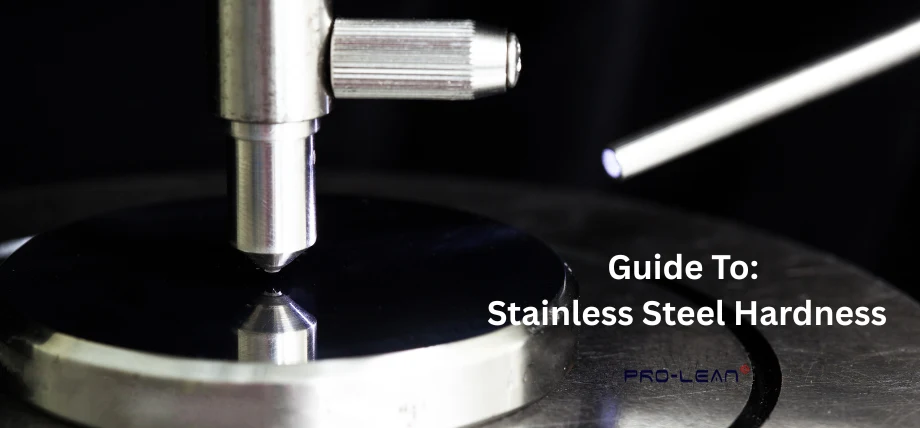
Stainless steel indentation
Stainless steel is mainly used for its corrosion resistance, but its durability and hardness make it an extremely versatile material. Hardness of stainless steel determines many of its potential applications.
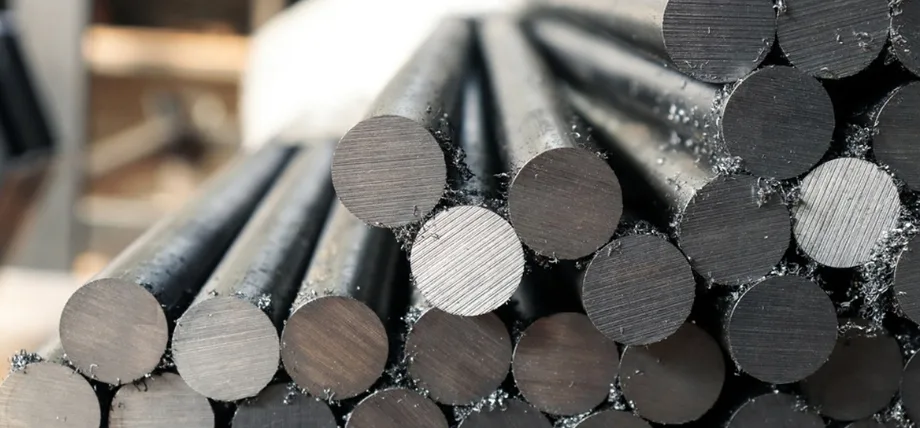
Stainless steel bars
Steel applications range from industrial components, automobile parts, and bridge construction to consumer products. One way types of stainless steel are categorized is through their composition and hardness.
In this article, you’ll learn about stainless steel hardness and factors affecting the hardness of stainless steel with a focus on improving the hardness.
What Is Hardness?

Countersink drilling in a steel sample
Hardness is the ability of a material to resist any kind of localised plastic deformation, scratching, and indentation when it is subjected to a load. For stainless steel, hardness is a mechanical property that affects wear resistance, strength, and machinability of the material.
Material hardness is determined using an indentation test, and resistance to penetration is measured by a predefined tool. Hardness can be quantified using hardness scales.
Hardness of stainless steel varies significantly depending on alloy composition, heat treatment, and forming methods.
Try Prolean Now!
How Is Hardness of Steel Measured?
There are standardized methods to test stainless steel hardness. These tests measure the resistance of stainless steel to an indentation from a diamond or ball-shaped tool.
Rockwell Hardness Test
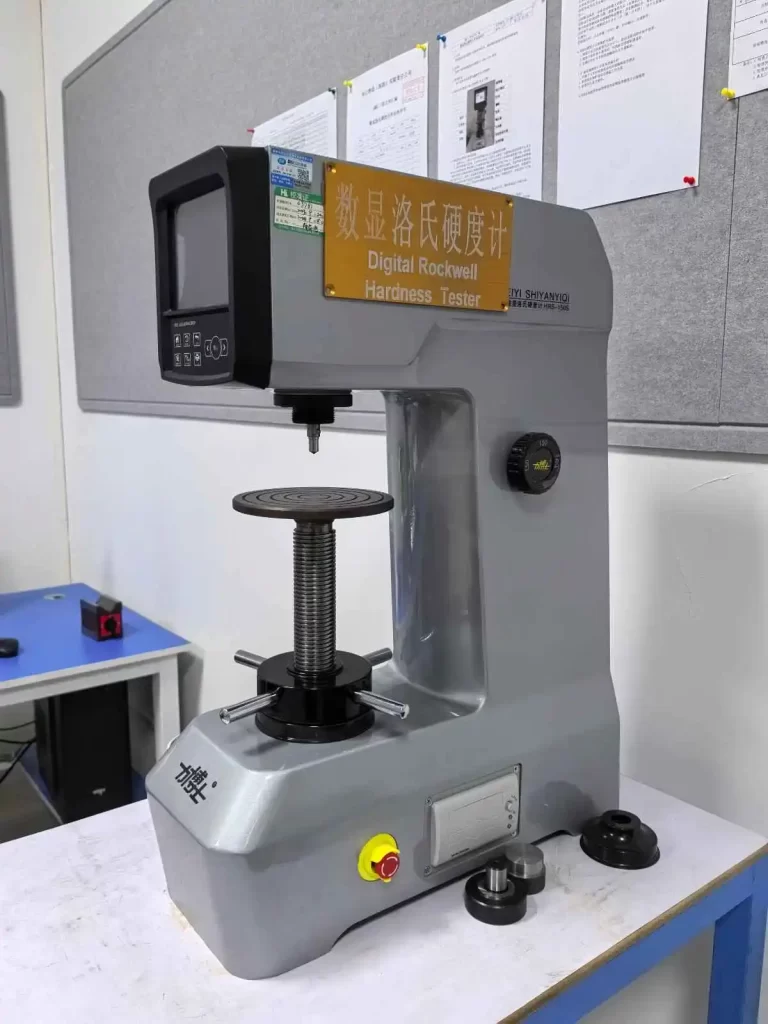
Rockwell hardness tester
The Rockwell hardness test uses a specific load and tool shape. There are two measurement scales in Rockwell that are commonly used for stainless steel. The first one is Rockwell C or HRC, and the second is Rockwell B or HRB.
The difference between HRB and HRC lies in the hardness of stainless steel. HRB is for softer stainless steel alloy grades, and HRC is primarily used for harder stainless steel grades like martensitic steel.
Rockwell testing uses a small load to seat the indenter and then a larger load to force the indenter into the stainless steel. Using martensitic grades like 420 as an example, it would achieve an HRC value of 50 or higher, and 304 stainless steel falls in the 70-90 Rockwell B range.
Brinell Hardness Test

Brinell hardness test
The Brinell hardness test measures the diameter of an indentation, and the tool used is a round indentation ball made of hardened steel; modern testers use tungsten carbide balls. The Brinell hardness test is ideal for softer stainless steels.
The Brinell scale uses HB values; for example, an austenitic stainless steel can have an HB value between 150 and 200 HB. It is not ideal for hard materials, but it can be used for soft materials, and it can be used on a wider variety of materials.
Vickers Hardness Test

Vickers test
Vickers testing uses a diamond indenter shaped like a pyramid to create an indentation under a controlled load. The Vickers hardness test uses Vickers units (HV). Vickers hardness testing is suitable for both soft and hard stainless steels.
It can be used on hardened stainless steel and provides precise measurements. For example, it can be used on precipitation hardened stainless steels showing a value exceeding 300 HV, reflecting high strength.
Try Prolean Now!
Factors Affecting Stainless Steel Hardness
The hardness of stainless steel is affected by many things, from its composition to heat treatment and post-processing methods.
Composition
Chemical composition is the primary differentiator affecting stainless steel hardness. Stainless steel is made of iron and carbon, with secondary alloying elements like chromium, nickel, and molybdenum.
Chromium ranges from 10.5% to 30% and is mainly added for its corrosion-resistant properties, and forms an oxide layer that offers protection to stainless steel.
Nickel is commonly found in grades 304 and 316 and is used to improve ductility. The most dominant factor in stainless steel hardness is the amount of carbon present in the alloy.
Grain Structure

Metal alloys’ grain structure
The microstructure of stainless steel changes because of the alloying elements and steel processing.
- Austenitic Stainless Steel: 304 and 316 stainless steel grades have a face-centred cubic structure (FCC). They offer excellent corrosion resistance but lower hardness due to their ductility. These FCC stainless steels cannot be hardened using heat treatment, but can undergo work hardening.
- Martensitic Stainless Steel: Grades like 410 and 420 have a body-centered tetragonal structure. This means you can harden martensitic stainless steel with heat treatment methods like quenching and tempering.
- Precipitation Hardened Steel: These alloys achieve high strength and hardness through precipitation hardening. The method introduces precipitates after heat treatment.
Heat Treatment
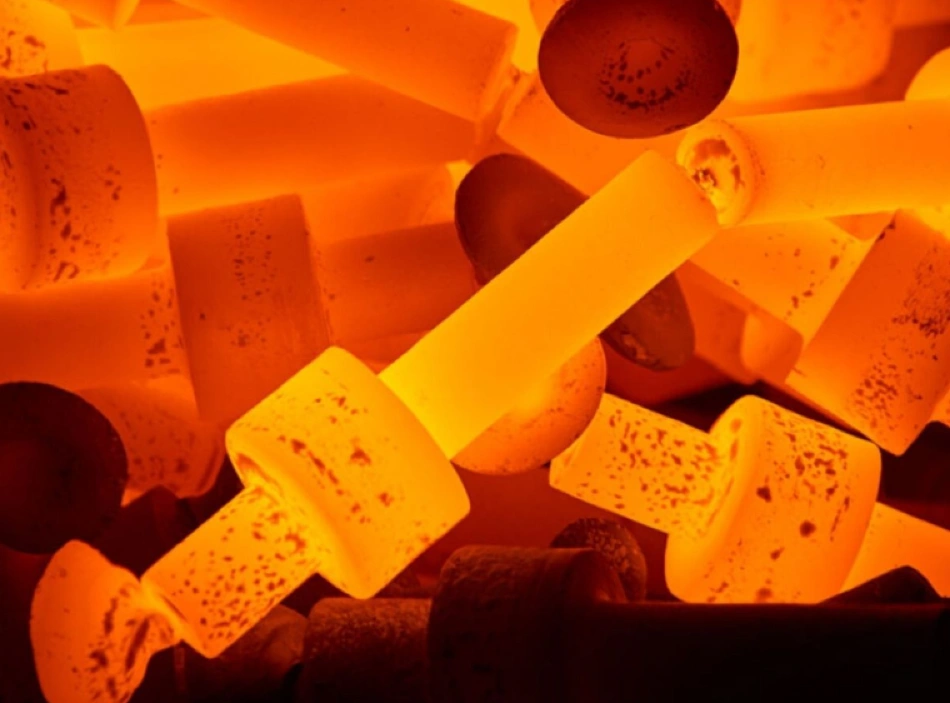
Heat treatment is a process that modifies the hardness of stainless steel. For martensitic steel and precipitation hardened grades, it’s the go-to method to improve hardness.
In heat treatment, the quenching process involves rapid cooling of stainless steel from a high temperature to fix or lock the hardened structure into the lattice. Tempering stainless steel reduces the brittleness while maintaining hardness.
Austenitic grades like 304 and 316, which are common in CNC machining stainless steel, are not hardenable by heat treatment; instead, they are strengthened using work hardening.
Forming Process
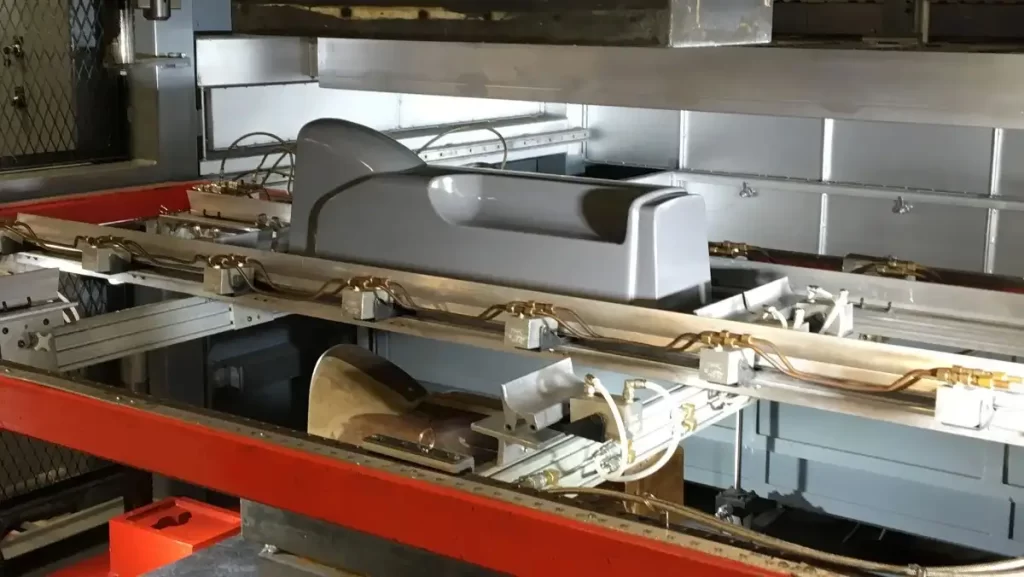
Forming processes are mechanical processes that shape the stainless steel into the desired component. Mechanical deformation can also strengthen and harden the steel.
Cold Working
Cold working processes are rolling, drawing, or bending (common in stainless steel sheet fabrication) at room temperature, which can work harden austenitic stainless steel grades like 304 and 316.
Hot Working
Hot working done at high temperatures has many benefits, some being a reduction in hardness by allowing recrystallisation and stress relief in the microstructure of stainless steel.
Forging
Forging shapes the stainless steel under high pressures and loads. Forging martensitic stainless steel grades and then heat treating can improve the hardness, and for austenitic grades, it only provides moderate work hardening.
Types of Stainless Steel and Their Hardness
Different types of stainless steel vary in their hardness because of forming, composition, microstructure, and mechanical stainless steel properties. The most common stainless steels show simple variation in chemical composition, but this changes their main application.
304 Stainless Steel: Properties and Hardness
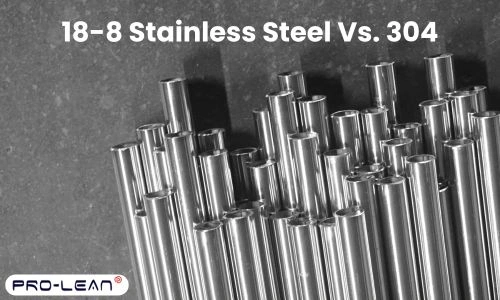
304 stainless steel from the 300 series has 18% chromium and 8% nickel. It is also called 18-8 stainless steel and known for excellent corrosion resistance and machinability. It has relatively low hardness compared to other stainless steels
Hardness of 304 stainless steel ranges from 70-90 Rockwell B or 150 – 200 on the Brinell scale. It is widely used in chemical equipment and food processing equipment because of its corrosion resistance.
316 Stainless Steel: Enhanced Corrosion Resistance and Hardness

316L Stainless Steel Parts Properties
316 stainless steel is another austenitic grade from the 300 series that contains 2 – 3% molybdenum for corrosion resistance, specifically for marine and chloride environments.
316 ranges 70-90 on the Rockwell B scale. It is mainly used on boats, in marine environments, and in medical devices. It is also called surgical steel because of its use in surgical instruments.
420 Stainless Steel: High Hardness Applications
Martensitic 420 stainless steel has a higher carbon content, which gives it a higher hardness through heat treatment. 420 can reach a hardness of 50 – 55 on the Rockwell C scale.
The higher hardness means better wear resistance and applications in surgical instruments and valves. However, its corrosion resistance is much lower than that of 316 and 304 stainless steels.
410 Stainless Steel: Balancing Hardness and Toughness
410 stainless steel is also a martensitic stainless steel that has a lower carbon content than 420 and moderate hardness. It measures 30 – 40 post heat treatment on the HRC. It offers a balance of corrosion-resistant and hardened properties.
Improving The Hardness of Stainless Steel
Metal fabricators use several methods to improve the hardness of stainless steel.
- Heat Treatment: For martensitic grades like 410 and 420, quenching and tempering can significantly improve the hardness to form a hard martensitic structure, while tempering reduces brittleness.
- Work Hardening: Cold working austenitic grades increases their hardness and tensile strength.
- Precipitation: Precipitation hardened stainless steels form precipitates after heat treatment to enhance strength and hardness without sacrificing corrosion resistance.
- Alloying: Increasing the carbon content of stainless steel can immediately make it harder and more wear-resistant. Carbon steel and stainless steels have drastically different strengths. Using molybdenum can also achieve the same effect.
Conclusion
Stainless steel hardness is one of the most critical properties that determines the application and suitability of stainless steel. Understanding the factors affecting hardness, like chemical composition, grain structure, heat treatment and forming, can help you choose the appropriate stainless steel grade.
Techniques like heat treatment can improve stainless steel’s hardness; however, you need to be careful with the microstructure and alloying elements of stainless steel, as some heat treatment methods do not work on certain grades of stainless steel.
Stainless Steel Machining at ProleanTech
ProleanTech offers state-of-the-art CNC machining services for stainless steel, carbon steel, and alloy steel. Our in-house hardening facilities can alter stainless steel strength post-machining for your parts.
Receive a free quote today.
FAQ
What Is the Hardness of 304 Stainless Steel?
The hardness of stainless steel 304 is 70 – 90 on the Rockwell B. The range comes due to work hardening methods that can introduce variation in the hardness.
What is harder, 304 or 316 stainless steel?
Both 304 and 316 have a similar hardness of 70 – 90 HRB. But, generally, 304 stainless steel is harder.
Is 304 stainless steel hard or soft?
304 stainless steel is a soft steel with low carbon and measures 70 – 90 on the HRB.
How is stainless steel hardened?
Stainless steel can be hardened through methods like heat treatment, work hardening, or precipitation hardening. The method largely depends on the microstructure of the stainless steel.


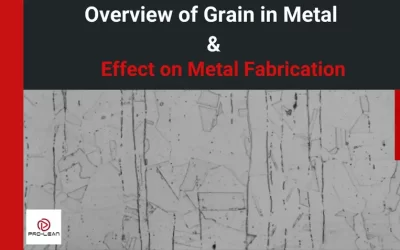
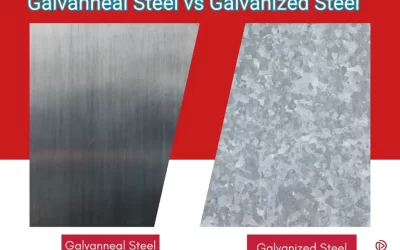
0 Comments